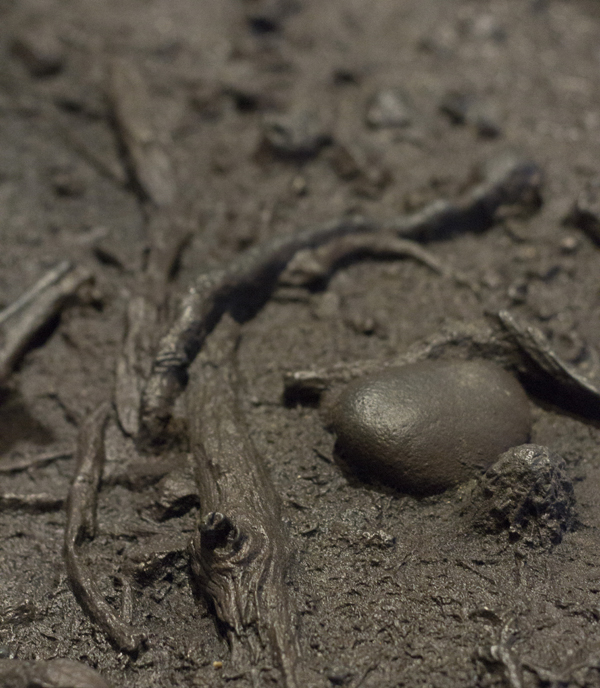
To encounter Tamsie Ringler’s most recent body of work is to perceive its occasionality. This is no idle observation. Her series of cast-iron prints, created in the past several years, is itself an occasion conditioned by quite particular occasions that are palpable in each sculpture. Their mottled and textured surfaces, impressions of precise geographies and creative chambers, give trace to Ringler’s intimate encounters with places such as Papago Park in Tempe, Arizona and Wayne Potratz’s Minneapolis studio. Each landscape and portrait, as Ringler characterizes this series, is the result of a certain intentionality that is apparent in the careful framing of each print. The framing may well have been haphazard, but nonetheless alert to the temporality of both the occurrence and the Janus act of creating the mold and pouring the molten iron. Fittingly, these temporal processes – themselves marked by chance – are apparent in each work’s charismatic and cattywampus topography.
Hans-Georg Gadamer tells us in Truth and Method that “occasionality belongs to the [art]work’s own claim,” more precisely its claim to meaning.” For Gadamer, occasionality is proper to portraits and poems that pay homage to a particular person, place, or thing. Their very significance is maintained by the occasion for which they came to be. (Consider the ubiquitous presence of what Ringler calls the “quiet dedications” in many of the prints. Such dedications are hidden references to the sculpture’s place or human subject: a rogue matchbox car here, an implied narrative of a space there.) And while such a theory of intentionality may be long in the tooth for artworks of more recent provenance, its logic draws an apposite circle around Ringler’s allusions to neither schemata nor models, but rather to “a particular original.” In Gadamer’s native tongue, this is ein bestimmtes Urbild, which implies a singular and primal image. In other words, an archetype.
For this viewer, Ringler’s cast-iron prints are archetypal in the sense that they appear to have been unearthed, ancient artifacts of the early Holocene period that gave rise to human civilization. At the same time, such a monumental impression is in productive tension with the temporal specificity of each sculpture. They are poignant records of the artist’s encounters with the environment, whether natural or cultural. In both the landscape and in the community spaces of her friends and colleagues – all teachers, who accommodate other people making work – she is clearly interested in the drama and spectacle of the floor. The periphery moves to the center: red Arizona soil and crusts of Creosote bush take center stage, as do shards of pre-processed bronze and the partial drum of an old iron furnace. “It’s a beautiful world,” Ringler remarked when I met her in her studio last month. Yes, it is.
Amy K. Hamlin
Associate Professor of Art History
St. Catherine University, Minnesota
Intimate Immensity Wrought - Essay by Diane Mullin, Senior Curator, Weisman Art Museum, MN
Landscapes and Portraits: Process